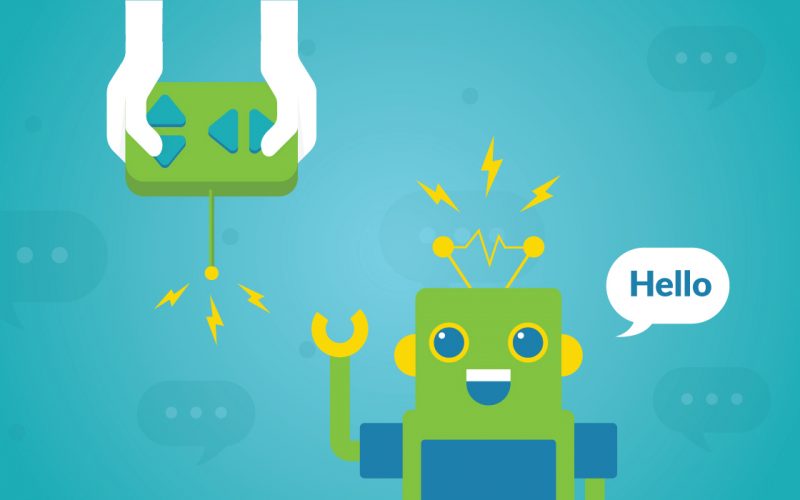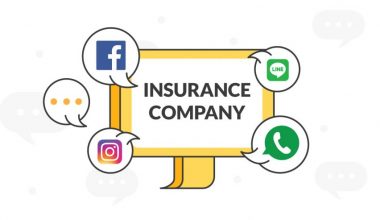Bots have emerged and transformed into a startling new phenomenon since Facebook launched it’s Messenger platform, which is equipped with an Artificial Intelligence (AI)-powered chatbot.[1] After a year has passed, chatbots have now become viral and messaging apps equipped with chatbot functions have been on the rise. Nearly over 100,000 developers have dabbled with and created an equal amount of chatbots.[2]
Although chatbots have become widespread, there are significant challenges. The main challenge is that chatbots may sometimes fail to fulfill customer requests. Some have also predicted that chatbots may eventually become a dying trend.[3]
Chatbot: Why They Could Fail
Facebook is reportedly scaling back its chatbot efforts on Messenger after some chatbots have failed to fulfill 70% of user requests. It was reported that these requests could not be handled without human agents and chatbots built by external developers faced issues with the technology because the “technology failed to understand human requests”[4]
Hence, instead of building a large ecosystem of chatbots, Facebook will be training Messenger chatbots to handle “a narrower set of cases so that users aren’t disappointed by the limitations of automation.”
With these significant challenges, many are predicting that chatbots are in a precarious position. One example of how chatbots had failed to soar is Everlane.[5] Everlane is a partner of Facebook Messenger for businesses. They have been partnering Facebook since 2016 when chatbots started becoming viral.
After two years of using Facebook Messenger as a tool to convey notifications (such as shipping confirmation and building better customer engagement), Everlane decided to cease the partnership and decided to return to email. They see email as a reliable tool to manage functions such as customer engagement.
So the question is: what is exactly wrong with chatbots? Chatbots must be understood to be one of the many messaging solutions that help businesses.[6] In theory, a business chatbot can answer questions, make purchase suggestions, process orders, and send shipping updates to customers. Companies could also cut costs by reducing the number of human customer service representatives. However, chatbots may not work out well without human presence.
Here are some reasons why[7]:
- Chatbots with linguistic and natural language learning capabilities are still quite rare
- Sometimes chatbots may not be able to solve specific problems or offer poor responses and affect customer experiences
- They are unable to hold contextual information for more than a few chat bubbles and will end up losing track of the original question posed
- They are unable to handle too many commands at any one time.
- They lack proper human escalation protocols
The disappointment of the user with chatbots may arise from their inability to sustain a pre-existing conversation as well as their inability to meet some specific requests. Most times, they also do not provide the human touch in conversations. These things are what makes customers reluctant to use chatbots.
How then can chatbots function optimally?
This new trend leads us to the rise of the Native Chatbot development. Chatbots are rising in native apps because chatbots can maintain control and maximize effective conversations with customers.
The following explanation may help to clarify things[8]:
A chatbot (can successfully function) …in either a website or app environment where the chatbot owner has full control over the user experience of the entire customer journey.
Native app would help users have full control and better personalization of the conversational experience. It can solve the problem of a lack of chatbots by sharpening questions and answers in a more specific direction to be more effective by using the practice of integrating multiple channels to create a seamless and consistent customer experience.
Benefits of an app-first chatbot strategy include[9]:
- Customizability: You can choose the user experience (UX) for your chatbot which allows you to tailor it entirely to your customers’ specific needs.
- Ownership of customer relationship: You can capture customers higher up through the funnel.
- Control Over Data: Your access to your customers’ data is not limited by the platform’s policies and shared with them since you have control over the data.
- Reduced friction for loyal customers: You can retain your customers directly as.
Also read: “How Businesses Today are Implementing Chatbots to Elevate Their Services“
These advantages require organizations to unify their goals and strategies. Therefore, bringing together multiple channels into an entity that also combines the user experience is the solution. So, as a comparison let’s have a look at some success stories where chatbots have become extremely useful in native apps. However, these examples of native chatbots aren’t necessarily meant to provide exact solutions for your business but rather to give you some ideas as to how you can create a superior customer experience using chatbots without your users ever leaving your mobile app.
- Erica is a chatbot created by Bank of America based on voice application. Initially, they wanted to improve customer engagement especially with the younger user segment. Being aware of how loyal customers are to their existing mobile apps, Erica also comes as a refresher with a new concept based on promoting customer interaction.6
- Facebook Messenger has been a runner in helping commercial companies accelerate their businesses using chatbots. One example is Anker, a popular electronic shop. By using a chatbot, buyers can be guided through conversations by asking a simple question and then the bot will answer it later by recommending a product at the end.7
- Operator by Intercom Live chat is one of the primary tools you can use to communicate with visitors to your website. Many live chat companies such as Intercom, Drift and Zendesk find a natural fit with chatbots to reduce some workload off customer service agents. Operator by Intercom is an excellent example in this case. It is a customer service chatbot that handles simple tasks so you can focus on things only humans can do. Operator does this through a set of rules and machine learning to recognize when a bot’s input is helpful but also know when it’s not[10].
- Qiscus as a chat provider service has just launched its omnichannel customer service dashboard called Qismo so you can easily manage your company’s customer service chats such as Facebook Messenger, LINE, and web widget in one simple dashboard. The application of this omnichannel customer service in your business is one of the best ways to fulfill customer expectations. Qismo has the advantage of being able to integrate chatbot functionality to solve general customer requests and to provide an agent management system for customer service departments to fulfill specific requests from customers.
[1] https://techcrunch.com/2016/04/12/agents-on-messenger/ [2] https://getvoip.com/blog/2017/04/21/the-current-state-of-chatbots-in-2017/ [3] https://www.fool.com/investing/2017/02/28/facebook-incs-chatbots-hit-a-70-failure-rate.aspx [4] Idem [5] https://www.recode.net/2017/3/1/14779978/everlane-facebook-messenger-stop-customer-service-notifications [6] https://chatbotsmagazine.com/the-rise-of-native-chatbot-development-658342167856 [7] https://chatbot.fail/ [8] https://chatbotsmagazine.com/the-rise-of-native-chatbot-development-658342167856 [9] https://layer.com/rise-of-chatbots-in-native-apps/ [10] https://chatbotsmagazine.com/the-rise-of-native-chatbot-development-658342167856



